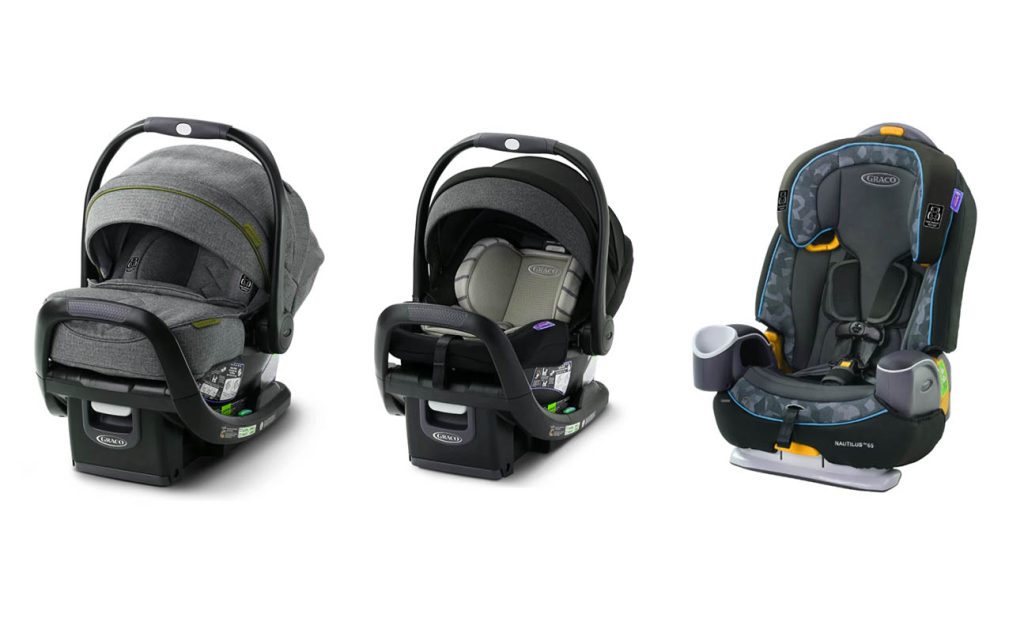
Types of Car Seats by Age
Well-intending parents often drive to run errands or go on a road trip, leaving their children in their car seats. While this is a common practice, and parents may be quite content with their babies resting in the car seats they chose, it is important for parents to have a good grasp on how car seats affect their children. Especially because infants develop the propensity for sleeping and spending long periods in carriers or car seats; if their seats are uncomfortable and not age-appropriate, it often leads to adverse side effects. Choosing the appropriate types of car seats can solve the problem. This is why, essentially, parents should be able to comprehend when to upgrade from an infant car seat, and when to get a bigger or new car seat.
Importance of Car Seats
Car seats are much safer than using seat belts only. As a matter of fact, car seats reduce the risk of unintentional injury caused by travel events by almost 70-80% for children. Moreover, booster seats reduce the risk of injury by a good 45% in children aged from 4 to 8 years old.
The 3 Types of Car Seats and Suitable Age Group
The Infant Car Seat
An infant car seat is the most common choice for new parents. It elegantly resembles a bucket and is rear-facing, solely focusing on the safety of newborns and small babies while traveling. Infant car seats are exclusively designed to protect a baby during the event of a collision or any other travel event; making them perfect to be used only for transporting babies in cars or other vehicles.
Although the car seat is comfortable, its mechanism does not focus on the baby’s safety while asleep. Babies require a flat, and comfortably firm surface to sleep on, which the car seats fail to provide. Therefore, parents should strictly stick to using the car seat as a mode of transportation only. In addition, loosely tucking the baby in such seats or leaving them unattended in the car may often lead to serious consequences.
When to Upgrade From Infant Car Seat
- These seats should ideally be used until the infant crosses 9-12 months.
- Wait until your baby surpasses about 30 pounds, or outgrows the seat before moving into a convertible.
Generally, babies tend to outgrow the seats before they celebrate their first birthday. And that is when parents should switch to a bigger car seat, known as a convertible.
The Convertible Car Seat
Parents may choose to shift to a convertible as soon as their child’s height and weight tick off the boxes for being appropriate for a convertible. However, parents tend to switch when the baby is stepping into their second year.
Convertible car seats do not come with handles. Additionally, they are typically manufactured in a way that makes them larger and more cumbersome to carry around once installed. Unlike infant seats, which are only forward-facing, convertibles can change positions, making them both rear-facing and forward-facing. This makes the convertible more versatile because it can be used with babies of various sizes.
When to Get a Bigger Car Seat
- Although laws and government regulations vary in each state, children are typically ready to move on to the booster seat from age 4 to 5.
- Weight plays a bigger role as the deciding factor here. Some children might be technically ready to shift to a booster seat, but not weigh enough. Children should hit about 40 pounds to be able to use a booster seat.
- Height is equally important and the child should at least be 35 inches tall to be eligible to use a booster seat.
Booster Car Seat
Booster seats, likewise, enforce safe traveling for children. These seats lift kids up, leaving space for the seatbelts to slither across their chest and pelvis; this protects the baby from any sort of serious damage during
The booster seat is much safer than a car seat because it comes with a five-point harness. When a baby sits inside, it works as a restraint.
When to Shift to Car Seat
Ordinarily, there are said rules for when a child can shift to a regular car seat. Once again, this may vary in different states. But typically, once the following criteria are met, the child is ready to travel like a full-grown adult.
- The baby should remain in a booster seat until he or she steps into the 8th year
- Height takes precedence over age. The child should have a standing height of 4 ft. and 9 inches to be eligible to not use the booster seat.
Factors to Consider While Choosing Car Seat Types
There are a few important considerations to make while selecting a car seat that best suits your baby. They are:
- Safety- examine how well the car seat serves its purpose. Parents should refrain from using second-hand car seats because a car seat is typically designed to survive one crash. Although it may look great on the outside, using a secondhand car seat or not knowing the history of a car seat can temper the safety of your child.
- Expiration date– a car seat works at its best for 6 years from its date of manufacture. As a concerned parent, be sure to check this information before making a purchase.
- Size- Each car seat has a different set of requirements for the age, height, and weight of the baby. Parents should essentially choose the one which is the perfect one for the child.
- Comfort- some babies might be allergic or sensitive to some materials. The chosen car seat must have material breathability for the utmost comfort of the baby.
- Portability-parents should ensure the chosen car seat is compatible with their baby, as well as their vehicle. Some seats are designed in a way that is too big and might be harder to install or maneuver
Mistakes to Avoid While Choosing Car Seat Types
Some of the common mistakes or carelessness for parents to avoid while installing a car seat are-
- Incorrect installation- car seats must be able to move around only and strictly for just an inch on all four sides.
- Retainer clip- if this is not used correctly. The car seat does not serve its purpose in a travel event or crash.
- Shifting the child to a convertible or booster too soon.
- Not following the instruction manual thoroughly or adding any external material that does not come with the seat.
Tips for Choosing the Appropriate Car Seat
- Choose a car seat that is compatible with most cars. This comes useful if your child travels in some other car for a change; the car seat will easily fit in.
- Ensure the chosen car seat is appropriate for your child’s age, but most importantly her/his weight and height.
- Avoid buying a second-hand car seat. They normally do not have manuals or may not function at their best.
- It’s best to buy the car seat while you are three weeks away from your due date. The first trip of your baby is on the way back home from the hospital. Parents often welcome their children much before their expected date. It is always safe to be prepared.
FAQ
How do I choose the safest car seat?
By law, every car seat is required to meet and pass the crash test in the states. This is a mandatory requirement by the US Federal Motor Vehicle Safety Standard. By default, all car seats available on market, depending on their length of launch, are considered safe.
How can I get help installing my car seat?
There are staff and even certified Child Passenger Safety Technicians available for help in a lot of stores who readily help parents to set up their safety car seats in their vehicle and walk them through the whole process.
How long can I use a car seat?
A car seat is typically designed to work perfectly for a period of six to ten years, provided it did not survive any crash or harsh event. Moreover, car seats come with labels that mention the manufacturer and expiration date, which are usually unique to each product.
There are three basic kinds of car seats designed for your child’s safety. The rear-facing only infant car seat, the rear and forward-facing convertible, and the booster.
Infants use the infant car seat like the name suggests until they are 1. Infant car seats are used in the rear-facing positions only. Unlike the convertible car seats, which can be used in both positions. Children are allowed on the convertible car seats until they are about 4 or 5, depending on their growth. And the final is the booster seat, which is meant to be used until the child is 6-8 years, depending on her/ his height and weight.
It is recommended to only use new car seats to maximize your child’s comfort and safety.
The tips below work as a strengthening effort to highlight areas of weakness in child passenger safety-
- Use a car seat that is compatible with your vehicle, keeping in mind your child’s age and size.
- Check the compatibility of your vehicle and the installed car seat. Give a thorough read to the vehicle’s manual and the car seat manufacturer’s instructions manual to ensure smooth operation.
- As an effort to maximize safety, use the car seat at least until your child hits age 12.
Unfortunately, one of the primary reasons for death among children over the age of 4 is a motor vehicle accident. Research shows only a small proportion of parents are well aware of car seat education, which includes knowing the proper use and common misuse of car seats.

Frank Matthew is an accomplished professional with a background in pediatrics, research, and writing. He began his career as a pediatrician and gained invaluable experience in caring for children, managing illnesses, and ensuring their overall wellbeing. After several years of practicing medicine, Frank shifted his focus to research and investigation in the fields of baby products, child safety, and child development. His passion for improving the lives of children through knowledge and understanding of these critical areas led him to become a leading expert in the field.
Today, Frank is a full-time author and blogger of the website Babyfifi.com, where he shares his expertise and insights with parents, caregivers, and professionals around the world. His extensive knowledge, combined with his exceptional writing skills, make him a sought-after resource for anyone seeking information on child development, parenting, and child safety. Frank’s dedication to improving the lives of children and their families is evident in everything he does, and his contributions to the field of pediatrics continue to make a significant impact.

